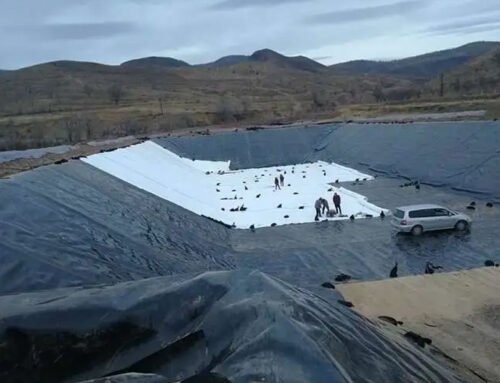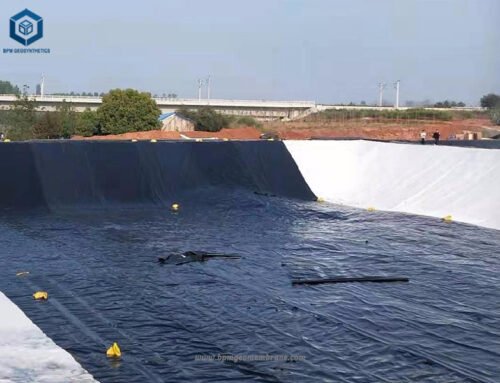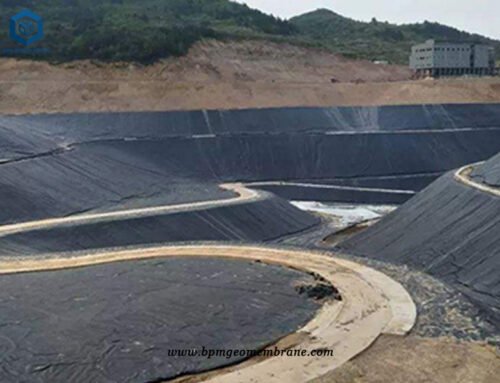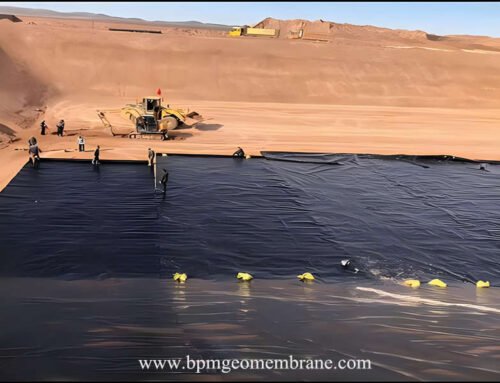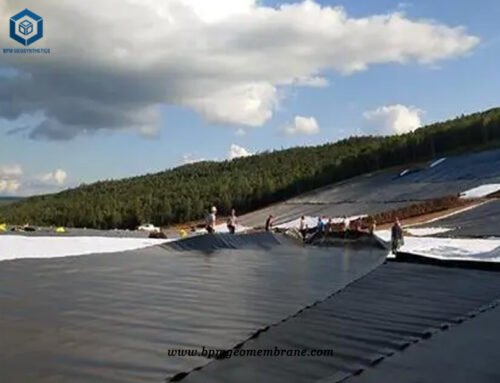Polyethylene pond liner features high tensile strength, stable chemical properties, tear and puncture resistance, UV stabilization and flexibility for deployment for a wide and growing range of applications including landfills, lagoons, channels and fish farming ponds, in addition to other engineering works.
Polyethylene pond liner, used for decades in waste containment. Durability, seepage proofing, and price make it a standard product in some areas. Some view it as basic construction material. However, it’s the sole barrier between soil and contaminants, making it a crucial environmental product.
What are the characteristics of polyethylene pond liner?
Polyethylene pond liner is a popular material used in the construction of ponds, water features, and other liquid containment systems. Its characteristics make it an ideal choice for these applications. Here are some of the key characteristics of polyethylene pond liner:
- Durability: Polyethylene is known for its strength and resilience. It can withstand harsh weather conditions, including extreme temperatures and UV radiation, without degrading or becoming brittle over time. This ensures a long lifespan for the pond liner.
- Flexibility: Despite its durability, polyethylene is also highly flexible, allowing it to conform to the shape of the pond or water feature. This flexibility makes installation easier and ensures a snug fit, reducing the risk of leaks.
- Resistance to Chemicals: Polyethylene is resistant to a wide range of chemicals, including acids, bases, and salts. This makes it suitable for use in various environments, including those with high levels of salinity or acidity.
- Environmental Friendliness: Polyethylene is a non-toxic material, making it safe for use in ponds and other bodies of water. It does not leach harmful substances into the water, ensuring that the water remains clean and safe for aquatic life.
- Cost-Effectiveness: Compared to other materials used for pond liners, such as PVC or rubber, polyethylene is generally more affordable. This makes it a cost-effective solution for both residential and commercial pond projects.
- Ease of Installation: Polyethylene pond liner is lightweight and easy to handle, which simplifies the installation process. It can be cut to size and shaped to fit the contours of the pond, and it can be secured using weights, rocks, or other anchoring methods.


What are the applications of Polyethylene Pond Liner?
Polyethylene pond liner has a wide range of applications due to its durability, flexibility, and resistance to chemicals and weather conditions. Here are some of the primary uses:
- Aquaculture: Polyethylene liners are extensively used in fish farming and other aquaculture operations. They create a safe and controlled environment for raising fish, shellfish, and other aquatic organisms.
- Water Storage: These liners are ideal for constructing water storage ponds, reservoirs, and tanks. They help in preventing water loss through seepage and contamination from external sources.
- Landfill Liners: Polyethylene liners are vital in modern landfills. They act as barriers to leachate contamination. This prevents soil and groundwater pollution.
- Construction of Water Features: In landscaping and garden design, polyethylene pond liners are essential. They create decorative ponds, waterfalls, fountains, and more. These liners offer a smooth, aesthetically pleasing finish.
- Environmental Protection:These liners play a crucial role in environmental conservation efforts. They are essential for constructing artificial wetlands. Additionally, they help safeguard shorelines against erosion.
- Agricultural Applications: Polyethylene pond liners are vital in agriculture. They help build irrigation ponds and water troughs. These liners also contain fertilizers and pesticides.
- Recreational Facilities: They are also used for building swimming pools, splash pads, and other water features. This ensures a safe and long-lasting surface for users.
- Wastewater Treatment: Polyethylene liners play a crucial role in wastewater treatment construction. They are used to line lagoons and bioreactors, preventing leakage. This ensures the efficiency of treatment processes.
- Mining Operations: In the mining industry, liners manage tailings and slurry. They ensure environmental compliance. They also prevent pollution.
- Secondary Containment: Secondary containment systems are crucial in industrial environments. They act as a backup to primary containment measures. Their main purpose is to prevent spills and leaks from spreading.
Case Study Of Polyethylene Pond Liner
Our Thailand customer reached out via www.bpmgeomembrane.com. He visited our factory and a biogas pool project site. Engineers recommended 1.2mm and 1.5mm GM-13 HDPE Geomembranes. The marsh gas pool cover will use the 1.2mm pond liner. The ground floor will have a 1.5mm pond liner. Customer was pleased with our detailed proposal. He placed the order and paid the deposit.
Polyethylene Pond Liner for Biogas Pool Project Specifications
- Total 1.2mm and 1.5mm geomembrane quantity – 21700m2
- Geomembrane specification – 7m*100m/roll
- One 40GP container


As the leading geomembrane manufacturer in China, BPM had been dedicated in providing one stop geomembranes and geosynthetics to worldwide customers for over 10 years. BPM is also providing professional design and installation service. OEM and ODM are also available. If you have any questions or inquiries, please fill and submit the following form, we will reply as soon as possible.

